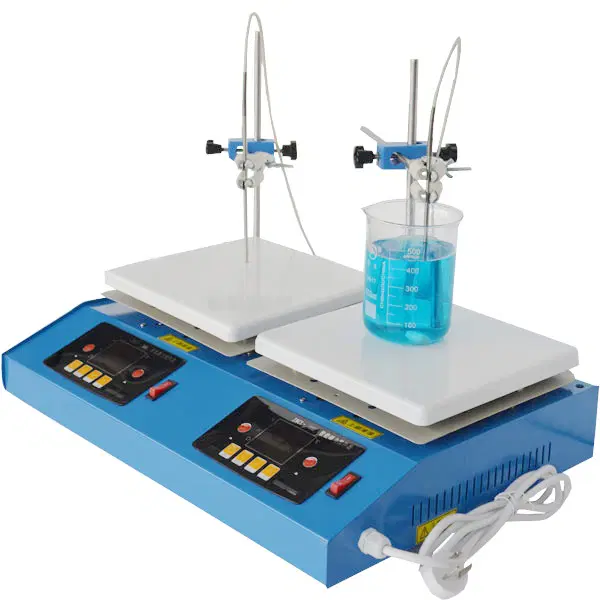Laboratory heating plates are essential instruments that have significantly transformed the processes of research and experimentation in scientific settings. In this article, we will delve into the benefits, unique features, and how these heating plates solve specific problems for users.
Additionally, we will optimize the article for SEO by using keywords such as medical innovation and laboratory research.
We understand that you need equipment that delivers maximum value to your laboratory. We invite you to visit https://kalstein.de/category-product/laboratory-line/hotplates-and-hotplate-stirrers/, to immerse yourself in our universe of cutting-edge technology equipment. Our prices are competitive and accessible, we combine the convenience of online shopping with the guarantee of an exceptional product. Because you deserve the best, we create and offer top-tier laboratory equipment. Make your choice today, where science comes to life. https://kalstein.de/
Benefits of Laboratory Heating Plates
Heating plates offer a range of benefits crucial for laboratory work. One of the main benefits is precision in temperature control. Modern heating plates are equipped with digital controls that allow for highly accurate temperature adjustments, which is vital for conducting experiments requiring specific thermal conditions. This enhances the reproducibility of experiments and the reliability of results.
Another significant benefit is the uniformity in heat distribution. Heating plates are designed to provide a uniform heating surface, ensuring that all parts of the sample receive the same amount of heat. This is particularly important in experiments where thermal uniformity is crucial for the validity of results. Additionally, modern heating plates are highly energy-efficient, reducing energy consumption and operational costs in laboratories.
Unique Features of Heating Plates
Modern heating plates come with various features that make them indispensable in laboratories. A standout feature is the incorporation of ceramic or aluminum surfaces, which provide excellent thermal conductivity and resistance to corrosion and aggressive chemicals. This extends the equipment’s lifespan and reduces the need for frequent replacements.
Another unique feature is the presence of advanced safety systems. Heating plates are equipped with overheat protection mechanisms and automatic shutdown systems. These systems not only protect the equipment but also ensure user safety by minimizing the risk of accidents. Moreover, many heating plates have LED indicators and alarms that alert users to operating conditions, adding an extra layer of safety.
Solving Specific Problems for Users
Heating plates address several specific problems faced by laboratory users. One common issue is the lack of precise temperature control, which can compromise the validity of experiments. Modern heating plates, with their digital controls and thermal precision, tackle this problem by allowing for precise and stable temperature adjustments, essential for sensitive experiments.
Another problem that heating plates help solve is variability in heat distribution. In many experiments, it is crucial that the sample is heated uniformly to obtain consistent results. Heating plates are designed to distribute heat evenly across the surface, eliminating cold and hot spots that could affect experimental results. This is particularly useful in applications such as biological sample incubation or solvent evaporation in analytical chemistry.
Medical Innovation and Advances in Laboratory Research
Heating plates exemplify how medical innovation and advances in laboratory research can significantly improve scientific processes. In biomedicine, for instance, heating plates are used to incubate cell cultures at precise temperatures, crucial for growth studies and viability experiments. The ability to maintain a constant and uniform temperature has allowed researchers to obtain more accurate and reproducible results in their studies.
In chemistry, heating plates have revolutionized evaporation and synthesis methods. Researchers can heat reagents and solutions in a controlled manner, essential for precise chemical reactions. Furthermore, the use of heating plates in analytical techniques, such as gas chromatography, has improved the efficiency and accuracy of chemical analyses, allowing scientists to obtain more reliable and detailed data.
Comparison with Other Heating Methods
Compared to other heating methods, such as water baths or Bunsen burners, heating plates offer several advantages. Water baths, while effective, do not always provide precise temperature control and can be cumbersome to handle. Additionally, water baths require constant maintenance and have limitations regarding the maximum temperature they can reach. In contrast, heating plates offer a broader temperature range and more precise control.
Bunsen burners, while useful for certain types of direct heating, are not suitable for applications requiring precise and uniform thermal control. Additionally, they pose significant safety risks due to the open flame. Heating plates eliminate these risks by providing a safe and controlled heating method. Moreover, modern heating plates can integrate with other laboratory equipment, such as magnetic stirrers, increasing their versatility and functionality.
Future of Heating Plates in Laboratories
The future of heating plates in laboratories looks promising, with ongoing innovations and technological improvements. An emerging trend is the integration of smart control technologies and connectivity. Future heating plates could be equipped with advanced sensors and wireless connectivity, allowing researchers to monitor and control temperature remotely through mobile devices or computers. This will not only improve precision and control but also increase convenience and efficiency in laboratories.
Another area of innovation is the development of advanced materials for heating surfaces. New materials could offer better thermal conductivity, greater chemical resistance, and longer lifespan. Additionally, incorporating green and energy-efficient technology could further reduce energy consumption and the environmental impact of heating plates. These innovations will ensure that heating plates remain an indispensable tool in laboratories worldwide.
In conclusion, laboratory heating plates are essential instruments that offer numerous benefits, from precise temperature control to uniform heat distribution. Their unique features and ability to solve specific problems make them an indispensable tool in any modern laboratory. With ongoing medical innovation and advances in laboratory research, the future of heating plates promises to be even brighter and more efficient.

